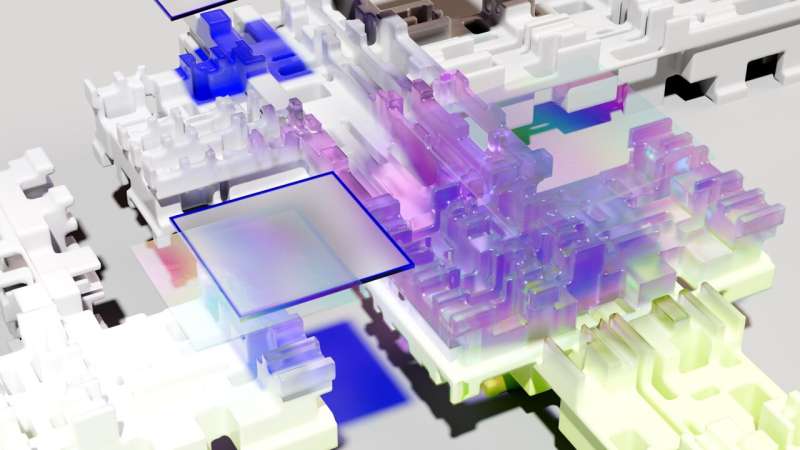Credit: Unsplash/CC0 Public Domain
A small team of researchers at the University of Manchester has developed a technique for creating a molecular-based, finite-state machine. Their research was published in the journal Nature.
In computer science, there is a virtual device known as a Turing machine, developed by Alan Turing as a way to envision how a computing system might work. It is described as a device that can read and write symbols onto a tape as it moves back and forth, controlled by rules that lay out what to do under given scenarios.
A modified version of the Turing machine has also been developed—called a finite state machine, it is identical to a Turing machine except that it can only move in one direction and can only read, not write. In this new effort, the researchers created a chemical analog of a finite-state machine—a rotaxane that is able to move along a molecular thread and read chirality information.
A rotaxane is a molecule shaped in a certain way. In this case, it was shaped like an O-ring with a Y strand attached at its top. In action, the molecule is referred to as a rotaxane automaton. The version created by the researchers had a crown ether that was used as a reading head. The automaton worked by pulling a molecular strand step-wise through its O-ring. Because it stops and starts at barriers on the strand, it is referred to as a ratchet.
The barriers are opened by a pH pulse generated by a quickly decomposing acid, allowing the automaton to move forward. The automaton pulls the thread through (or alternatively, moves forward while the strand remains still) using a higher binding affinity than that at the next barrier on the strand. The rotaxane automaton is able to read data from the thread using circular dichroism—output from the thread is in the form of balanced ternary digits ("trits").
The creation of the molecular ratchet is one step among many that will need to be achieved if chemists are to reach the goal of creating a molecular computer.
More information: Yansong Ren et al, A tape-reading molecular ratchet, Nature (2022). DOI: 10.1038/s41586-022-05305-9
Journal information: Nature
© 2022 Science X Network
























